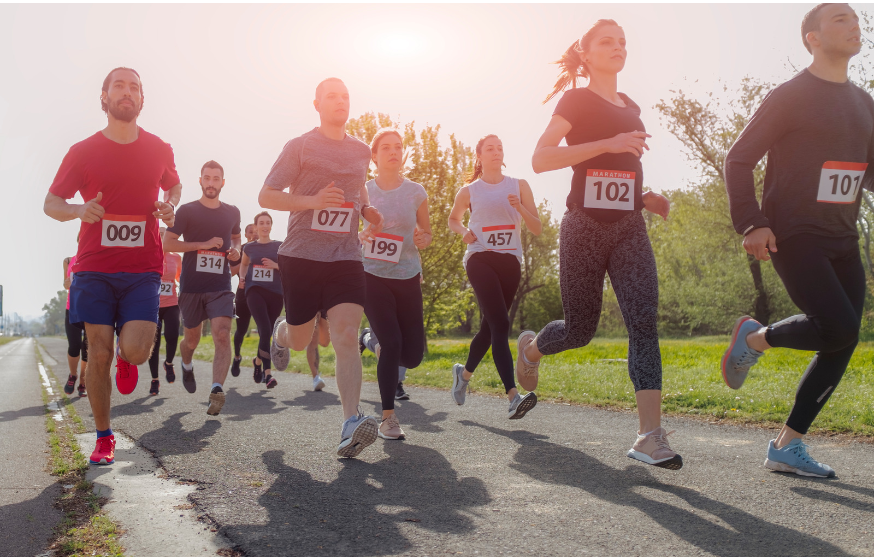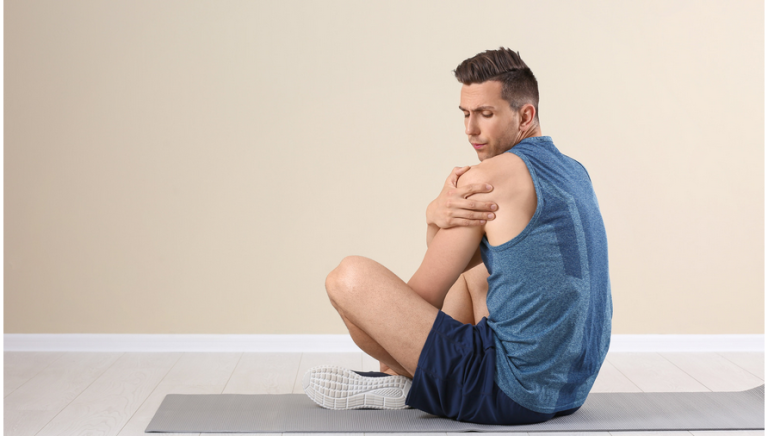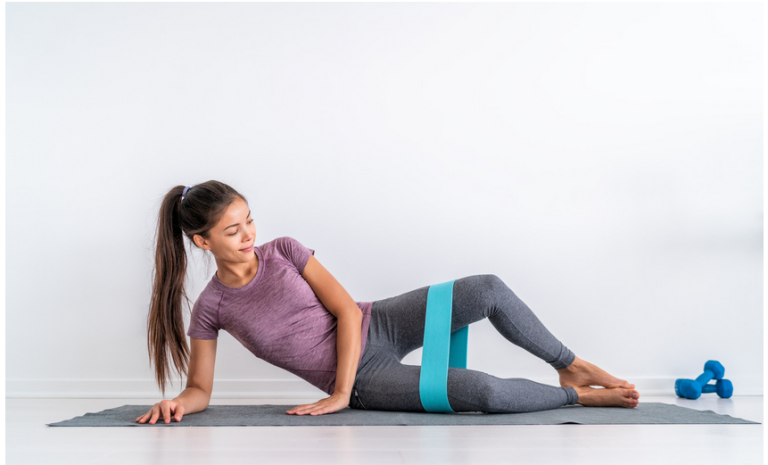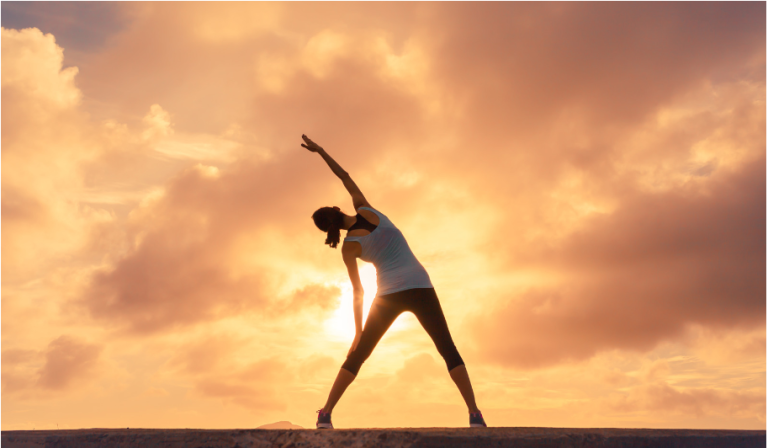
5 Best Calf Stretching for Runners to Prevent Injury and Improve Performance

If you’re a runner, you know how important it is to stretch your calf muscles before and after every workout. Your calves are the muscles on the back of your lower leg that help you propel yourself forward and absorb the impact of running. They are also prone to tightness, soreness, and injury if you don’t care for them properly.
Calf stretching can help prevent common running injuries such as calf strain, shin splints, and Achilles tendonitis. It can also improve your running performance by increasing your range of motion, flexibility, and muscle strength. Stretching your calves can also reduce muscle fatigue and soreness and help you recover faster from your runs.
But not all calf stretches are created equal. Some are more effective, depending on your goals, fitness level, and individual needs. In this article, we’ll show you the best calf stretches for runners, how to perform them correctly, and why they work. We’ll also give you tips on incorporating calf stretching into your running routine and avoiding common mistakes and injuries.
What are the benefits of calf stretches for runners?

Your calves are composed of two major muscle groups: the gastrocnemius and the soleus. The gastrocnemius is the larger and more visible muscle forming the bulge on your lower leg’s back. The soleus is the smaller and deeper muscle that lies underneath the gastrocnemius. Both muscles attach to the heel bone via the Achilles tendon, the thickest and strongest tendon in the body.
Your calves play a crucial role in running, as they help you launch off the ground, stabilize your ankle, and absorb the shock of landing. They also work together with other muscles in your lower leg, such as the hamstrings, quads, and glutes, to generate power and speed.
However, running also puts much stress and strain on your calves, especially if you run on hard surfaces, uphill, or at a fast pace. Running can cause your calves to become tight, overworked, and inflamed, leading to pain, stiffness, and reduced performance. Tight calves can also affect your posture and alignment and increase your risk of developing other injuries in your feet, knees, hips, and back.
That’s why calf stretching is so important for runners. By stretching your calves regularly, you can:
Prevent injury
Stretching your calves can help prevent common running injuries such as calf strain, shin splints, and Achilles tendonitis. These injuries occur when the calf muscles or tendons become overstretched, torn, or inflamed due to excessive or repetitive stress. Stretching your calves can help reduce the tension and inflammation in your muscles and tendons and improve your blood flow and oxygen delivery to the affected areas. Stretching can also help you warm up your muscles before running and cool them down after running, preventing muscle spasms and cramps.
Improve performance
Stretching your calves can also improve your running performance by increasing your range of motion, flexibility, and muscle strength. A greater range of motion means you can move your joints more freely and efficiently, which can improve your stride length and frequency. Flexibility means stretching your muscles more easily and comfortably, preventing stiffness and soreness. Muscle strength means generating more force and power with your muscles, improving your speed and endurance.
Enhance recovery
Stretching your calves can also help you recover faster from your runs by reducing muscle fatigue and soreness and promoting muscle repair and growth. Stretching can help you relax your muscles and release any knots or trigger points that may have formed during your run. It can also stimulate the production of endorphins, natural painkillers, and mood boosters that make you feel good after a hard workout.
How do you stretch your calf muscles properly?
There are many ways to stretch your calf muscles, but not all are equally effective or safe. Some of the factors that you need to consider when choosing a calf stretch are:
The type of stretch
There are two main types of stretches: static and dynamic. Static stretches involve holding a position for a certain amount, usually 15 to 30 seconds, without moving. Dynamic stretches involve moving your joints and muscles through a full range of motion, usually for 10 to 15 repetitions, with or without resistance.
Both types of stretches have their benefits and drawbacks, and the best type of stretching for you may depend on your goals, fitness level, and individual preferences. Generally speaking, static stretches are better for improving flexibility and preventing injury, while dynamic stretches are better for improving performance and warming up.
However, some studies suggest that static stretching may impair performance before a run, while dynamic stretching may enhance performance if done after a run. Therefore, you should experiment with different types of stretching and see what works best for you.
The target muscle
As we mentioned earlier, your calves are composed of two major muscle groups: the gastrocnemius and the soleus. Both muscles need to be stretched, but not in the same way. The gastrocnemius is more active when your leg is straight, while the soleus is more active when your leg is bent. Therefore, to stretch the gastrocnemius, you must keep your leg straight, while you must bend your leg to stretch the soleus.
You also need to pay attention to the position of your foot, as different angles can affect the intensity and focus of the stretch. For example, pointing your toes up can increase the stretch on the gastrocnemius, while pointing your toes down can increase the stretch on the soleus. You may also want to vary the direction of your foot, as rotating it inward or outward can target different parts of your calf.
The intensity and duration of the stretch
The intensity and duration of the stretch can also affect the effectiveness and safety of the stretch. Stretching too hard or too long can cause more harm than good, damaging your muscles and tendons and increasing your risk of injury. Stretching too lightly or too short can also be ineffective, as it may not provide enough stimulus to your muscles and tendons and fail to improve your flexibility and performance.
Therefore, you must balance intensity and duration and listen to your body’s feedback. A good rule of thumb is to stretch until you feel mild to moderate discomfort, but not pain, and hold the stretch for 15 to 30 seconds or perform 10 to 15 repetitions, depending on the type of stretch.
You can also adjust the intensity and duration of the stretch according to your goals, fitness level, and individual needs. For example, if you want to improve your flexibility, you may want to stretch more intensely and longer, while if you want to prevent injury, you may want to stretch more gently and shorter.
What are the 5 best calf stretches for runners?
Now that you know how to stretch your calf muscles properly, let’s look at the 5 best calf stretches for runners, how to perform them correctly, and why they work. These stretches are:
- Standing calf stretch
- Seated calf stretch
- Downward dog
- Heel drop
- Towel stretch
1. Standing calf stretch

The standing calf stretch is one of the simplest and most common calf stretches. It targets the gastrocnemius muscle and can be done anywhere, anytime, with or without a wall or a step.
To perform this stretch:
- Stand facing a wall, about an arm’s length away from it.
- Place your hands on the wall at shoulder level, and step back with your left leg, keeping it straight and your left heel on the ground.
- Bend your right leg slightly and lean forward until you feel a stretch in your left calf.
- Hold the stretch for 15 to 30 seconds or perform 10 to 15 repetitions, depending on the type of stretch.
- Switch legs and repeat.
This stretch works because it lengthens the gastrocnemius muscle, the larger and more visible muscle on the back of your lower leg. Keeping your leg straight and your heel on the ground increases the tension on the muscle and the Achilles tendon, improving your flexibility and preventing injury.
2. Seated calf stretch

The seated calf stretch is another simple and common calf stretch. It targets the soleus muscle and can be done anywhere, anytime, with or without a towel or a band.
To perform this stretch:
- Sit on the floor with your legs straight out in front of you.
- Wrap a towel or a band around the ball of your left foot, and hold the ends with your hands.
- Pull the towel or the band towards you until you feel a stretch in your left calf.
- Hold the stretch for 15 to 30 seconds, or perform 10 to 15 repetitions, depending on the type of stretch.
- Switch legs and repeat.
This stretch works because it lengthens the soleus muscle, the smaller and deeper muscle underneath the gastrocnemius. By bending your leg and flexing your foot, you isolate the soleus muscle and increase the stretch, improving your flexibility and preventing injury.
3. Downward dog

The downward dog is a yoga pose that stretches the entire back of your body, including your calves, hamstrings, glutes, back, and shoulders. It can also strengthen your core, arms, and legs and improve your posture and alignment.
To perform this stretch:
- Start on your hands and knees, with your hands under your shoulders and your knees under your hips.
- Spread your fingers wide and press your palms firmly into the floor.
- Tuck your toes under and lift your hips up and back, straightening your legs and arms and forming an inverted V shape with your body.
- Keep your back flat and your head between your arms, looking at your feet or navel.
- Press your heels toward the floor and feel the stretch in your calves, hamstrings, and glutes.
- Hold the stretch for 15 to 30 seconds or perform 10 to 15 repetitions, depending on the type of stretch.
- To increase the stretch, you can alternately bend and straighten your legs or pedal your feet as if riding a bike.
This stretch works because it lengthens the entire back of your body, from your heels to your head. It stretches both the gastrocnemius and the soleus muscles, as well as the hamstrings, glutes, back, and shoulders. It also strengthens your core, arms, and legs and improves your posture and alignment. It can also help you relax and calm your mind, as it is a yoga pose that promotes breathing and awareness.
OK, I’ll continue with the blog post.
4. Heel drop

The heel drop is a dynamic calf stretch that also strengthens your calves and ankles. It can be done on a step, a curb, or any elevated surface that allows your heels to hang off the edge.
To perform this stretch:
- Stand on the edge of a step, a curb, or any elevated surface with your feet hip-width apart and your toes pointing forward.
- Hold onto a railing, a wall, or any stable object for balance, if needed.
- Slowly lower your heels below the level of the step until you feel a stretch in your calves.
- Hold the stretch for a second, press your toes into the step, and lift your heels as high as possible until you feel a contraction in your calves.
- Repeat the movement for 10 to 15 repetitions or as many as possible.
This stretch works because it lengthens and contracts your calf muscles, especially the gastrocnemius, in a rhythmic and controlled manner. It also strengthens your ankles and improves your balance and stability. It can also help you warm up your muscles before running and cool them down after running.
5. Towel stretch

The towel stretch is a static calf stretch that can be done on the floor, bed, or couch. It targets both the gastrocnemius and the soleus muscles and can be done with a towel, a band, or a rope.
To perform this stretch:
- Lie on your back with your legs straight and your feet flexed.
- Wrap a towel, a band, or a rope around the ball of your right foot, and hold the ends with your hands.
- Gently pull the towel, the band, or the rope toward you until you feel a stretch in your right calf.
- Hold the stretch for 15 to 30 seconds, then switch legs and repeat.
This stretch works because it lengthens the gastrocnemius and the soleus muscles by keeping your leg straight and your foot flexed. It also allows you to control the intensity and the angle of the stretch by pulling the towel, the band, or the rope more or less and rotating your foot inward or outward. It can also help you relax and unwind, as it is a lying-down stretch that can be done on a comfortable surface.
How to incorporate calf stretching into your running routine?
Now that you know the 5 best calf stretches for runners, you may wonder how to incorporate them into your running routine. Here are some tips and recommendations on how to do that:
- Stretch before and after running: Stretching before and after running can help you prevent injury, improve performance, and enhance recovery. However, you may want to use different types of stretching for different purposes. Before running, use dynamic stretches, such as the heel drop, to warm up your muscles and joints and prepare them for the activity. After running, use static stretches like the standing calf stretch to cool down your muscles and joints and relieve tension or soreness. You should also stretch more gently and longer after running to allow your muscles and tendons to relax and recover.
- Stretch regularly and consistently: Stretching can help you maintain and improve your flexibility and performance and reduce your risk of injury. You should stretch your calves at least three times a week or more if you run frequently or have tight calves. You may also want to stretch your calves on your rest days or when you do other activities, such as cycling, swimming, or strength training, to keep your muscles and tendons healthy and flexible.
- Stretch properly and safely: Stretching can help you avoid common mistakes and injuries and get the most out of your stretching.
Stretching Program Guidelines
You may want to follow these general guidelines when stretching your calves:
- Warm up before stretching: Warm up before stretching can help you increase your blood flow and oxygen delivery to your muscles and tendons, making them more pliable and responsive to stretching. You can warm up by doing some light cardio, such as jogging, skipping, or jumping, for 5 to 10 minutes or doing dynamic stretches, such as the heel drop, for 10 to 15 repetitions.
- Stretch gradually and gently: Stretching gradually and gently can help you avoid overstretching or tearing your muscles and tendons and causing more harm than good. You can stretch gradually and gently by starting with low intensity and duration and gradually increasing them as you feel more comfortable and flexible. You can also stretch gently by listening to your body’s feedback and stopping or easing off the stretch if you feel any pain, discomfort, or resistance.
- Breathe deeply and relax: Breathing deeply and relaxing can help you enhance your stretching by releasing any tension or stress in your muscles and mind and allowing your muscles and tendons to stretch more easily and comfortably. You can breathe deeply and relax by inhaling and exhaling slowly and deeply through your nose and focusing on your breath and the sensation of the stretch. You can also relax by avoiding unnecessary or excessive movement, such as bouncing, jerking, or twisting, which can interfere with your stretching and increase your risk of injury.
Summary
This article showed you the 5 best calf stretches for runners, how to perform them correctly, and why they work. We also gave you some tips on incorporating calf stretching into your running routine and avoiding common mistakes and injuries. Here are the main points to remember:
- Calf stretching can help you prevent injury, improve performance, and enhance recovery by increasing your range of motion, flexibility, and muscle strength and reducing muscle fatigue and soreness.
- The 5 best calf stretches for runners are standing calf stretch, seated calf stretch, downward dog, heel drop, and towel stretch. These stretches target the gastrocnemius and soleus muscles, the two major muscle groups in your calves.
- To stretch your calf muscles properly, you need to consider the type of stretch, the target muscle, the intensity and duration of the stretch, and your goals, fitness level, and individual needs. You must also warm up before stretching, stretch gradually and gently, breathe deeply, and relax.
- To incorporate calf stretching into your running routine, you should stretch before and after running, using different types of stretching for different purposes. You may also want to stretch regularly and consistently, at least three times a week, or more if you run frequently or have tight calves.
We hope you found this article helpful and informative and that you learned something new and useful. If you have any questions, comments, or feedback, please leave them below. Happy stretching and happy running! 😊
References
1 Baxter C, Mc Naughton LR, Sparks A, Norton L, Bentley D. Impact of stretching on the performance and injury risk of long-distance runners. Research in Sports Medicine. 2017 Jan 2;25(1):78-90.
2 Malliaras P, Barton CJ, Reeves ND, Langberg H. Achilles and patellar tendinopathy loading programmes: a systematic review comparing clinical outcomes and identifying potential mechanisms for effectiveness. Sports medicine. 2013 Apr 1;43(4):267-86.
3 Witvrouw E, Mahieu N, Danneels L, McNair P. Stretching and injury prevention: an obscure relationship. Sports medicine. 2004;34(7):443-9.
4 Kubo K, Kanehisa H, Fukunaga T. Effects of transient muscle contractions and stretching on the tendon structures in vivo. Acta Physiologica Scandinavica. 2002 Nov;176(3):157-64.
5 Fredericson M, Moore T, Guillet M, Beaulieu C. High hamstring tendinopathy in runners: meeting the challenges of diagnosis, treatment, and rehabilitation. The Physician and sportsmedicine. 2005 May 1;33(5):32-43.



